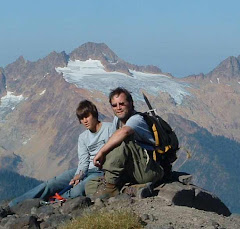I ask this question with the deepest possible meaning. No
flippant answer would work here . . . but maybe after years and years of
contemplation you could just start to scratch the surface.
Background: I will
give a brief description of the Homo Naledi find but encourage you to follow
the story in detail here. In summary,
ancient human ancestors are found and reproduced from small fragments of bone
that date back well over 1 million years, and sometimes more than 2 million.
However last year a team of anthologists and archeologists asked a couple of amateur
spelunkers in South Africa to explore a tiny tunnel in the back of a well
explored cave. What they eventually
found, through three long small passages was astounding.
This will probably be the greatest find ever in
the search of ancient human ancestors. They
have only examined about 10% of the remote cave chamber and have found 17-18 individuals,
many near complete skeletons. It is hard to think of a metaphor to describe the
value of this find. Maybe like a
prospector spending his entire life, with his donkey and gold pan, searching for
one nugget and then stumbles into the vault at Fort Knox.
Not only is this a new, yet undiscovered species, it raises
many intriguing questions. First, it is not an ape. The hands and feet of Homo
Naledi are almost identical to humans.
But it is certainly not human and, we don’t have DNA yet so we are not
sure, probably could not have interbred with humans like the Neanderthal did. The
most remarkable thing is that the remains of these 2 million old ancestors could
not have been piled up in this remote cave chamber by natural means. For
example, there could not have been some type of ancient wolf that only ate Homo
Naledis and carried their bones to this cave. There have been no other animal
bones discovered in the cave. There
could not have been some type of flood that washed the bodies into the cave.
There is scant evidence of water being in that part of cave and no other outside
debris that you would certainly have with a flood. There is only one rational answer, this was a
ritualistic burial. There are some death
observances in the animal kingdom, such as elephants, dolphins and possible
apes, this entombment is unique, prior to this point, to humans.
So how does Homo Naledi fit into the Christian story? In most evangelical churches, you can’t even
begin to have this rational conversation. I
started to discuss something like this in my old evangelical church and one of
the elders said to me, “That evolution stuff is just a bunch of crap. They created the Neanderthal from a pig’s tooth
and clay. Carbon dating has been proven wrong.” Of course they don't use carbon dating to date these ancient inorganic fossils.
I knew that I was no longer talking to a friend but to a
chick tract or a Ken Ham video. My friend’s mouth was moving but Ken’s words were coming
out.
A lot of people prefer not to think about these difficult
questions. I love them because of my natural
curiosity. They certainly don’t make my
theology simpler. It would be nice if the Genies story was more clear and detailed
and fit perfectly with the fossil record. It is confusing when things like Homo
Naledi walk into the scene, like a Macbethian character walking onto a stage
where a futuristic sci-fi play is being performed.
There are so many questions to be asked. My sense that there was a long process,
guided by God as a creative process, to form humans. I think the Homo Naledi creature was a
pre-human and innocent form . . . pre-fallen in other words. But then it raises
other theological questions. If sin had not entered, why was death everywhere? After all, the cave is full of death.







